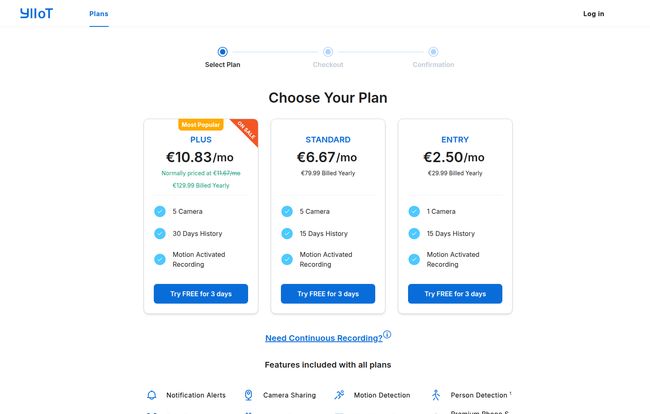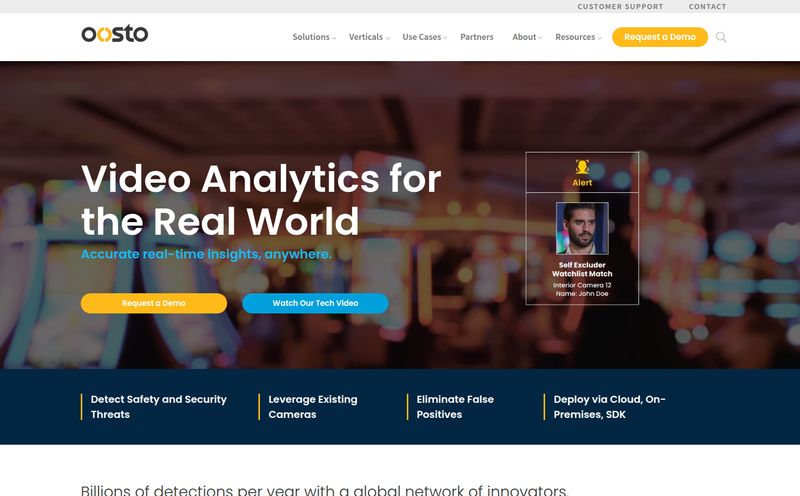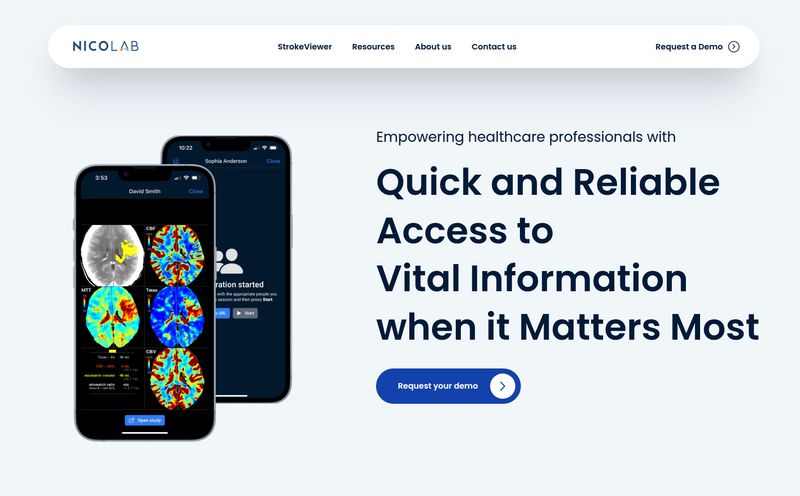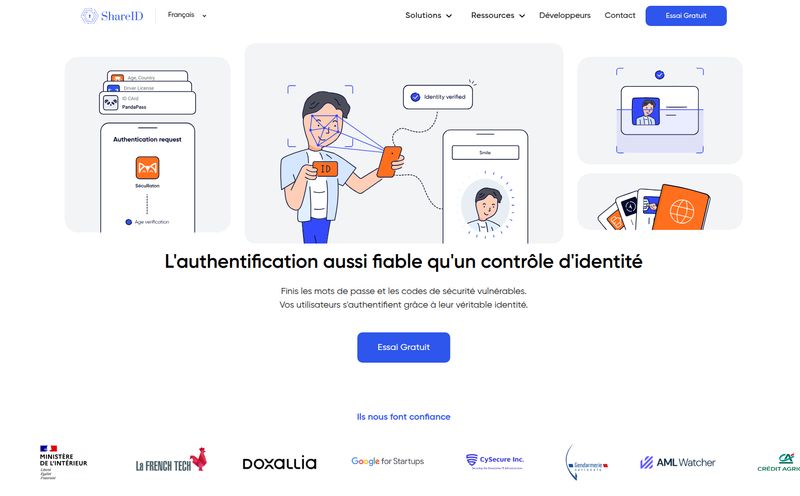We've all been there. You get a security camera for peace of mind, and for the first week, it's great. Then... the notifications start. A car drives by. Buzz. A cat saunters across your lawn. Buzz. The wind blows a leaf in a particularly aggressive way. BUZZ. Your phone becomes this incessant source of non-emergencies, and pretty soon, you start ignoring the alerts altogether. It's the digital version of the boy who cried wolf.
This is the exact problem I see plague so many smart home setups. The tech is there, but the intelligence isn't. So when a service like YI IoT Cloud comes along, claiming to have the answer with AI-powered detection, my inner tech-skeptic sits up and pays attention. Is this just another monthly fee for a glorified video hosting service, or is it actually something that can restore sanity to our smart homes? I’ve spent years looking at traffic generation and user trends, and I can tell you that user fatigue is a real product-killer. So, let’s get into it and see if YI has cracked the code.
What Exactly is YI IoT Cloud?
At its most basic, YI IoT Cloud is a subscription service that saves the video recordings from your YI or Kami security cameras to a secure online server. Gone are the days of worrying about a burglar just stealing the camera along with the SD card containing all the evidence. It’s off-site, it’s safe, and you can access it from anywhere with an internet connection.

Visit YiIotCloud
But calling it just “cloud storage” is a bit of a disservice. It’s like calling a smartphone just a phone. The real magic, and the reason we're even talking about this, is the layer of artificial intelligence they build on top. Think of it less like a digital shoebox full of old video tapes and more like a smart personal assistant who watches them for you. This assistant—the AI—can tell the difference between a person, an animal, and a vehicle. Suddenly, those endless, useless notifications can be filtered into something genuinely useful. It's a service from Kami Vision, a company that, according to their site, has over 15 million cameras in use worldwide. They're not a tiny startup, and they've got the social proof with mentions in Forbes and Wired to back it up.
Breaking Down the YI IoT Cloud Features
Okay, let's get into the nitty-gritty. What are you actually paying for? It's easy to list features, but I prefer to think about the problems they solve.
The Core: Cloud Storage and Motion Recording
This is the foundation. Depending on your plan, you get either a 15-day or 30-day history of all motion-activated recordings. For me, 15 days is usually plenty for a home setting. If something happens, you're likely to know and save the clip well within two weeks. The 30-day option is more for those who travel a lot, or for a small business that might need to review footage from further back. The key here is that it's motion-activated. The camera isn't recording 24/7 to the cloud (which would eat up bandwidth), but rather only when it detects activity.
The “Smart” Part: AI-Powered Detection
This is the game-changer and the main reason to even consider a plan like this. Frankly, paying for cloud storage without smart detection in 2024 feels a bit like buying a new car without power steering. You can do it, but why would you?
YI’s service offers several types of detection:
- Person Detection: The most important one. This is how you stop getting alerts for every swaying tree branch and start getting alerts for actual people.
- Vehicle Detection: Super useful for knowing when a car pulls into your driveway, or for filtering out routine traffic on a busy street.
- Animal Detection: Finally, a way to know if it was the neighbor's cat or a raccoon that knocked over your planter again.
- Face Detection: This one is a bit more advanced, building a facial profile to potentially recognise family members versus strangers.
Now, a quick dose of reality. The fine print on their site is important: these AI features are only available on supported devices and certain plans. And some, like Face Detection, may have regional limitations, with a note saying it's only available in the United States. So, before you buy, double-check that your specific camera model and region are compatible with the features you want most. It's a classic case of 'read teh manual,' or in this case, the website footnotes.
Everyday Conveniences: Sharing and Multi-View
These are less flashy but incredibly practical. Camera Sharing lets you grant access to a spouse, family member, or even a house-sitter without giving away your main account password. Multi-Live View is exactly what it sounds like—a single screen where you can see the live feeds from multiple cameras at once. It’s your own personal security command center, perfect for quickly scanning the front door, backyard and garage all at once.
Let's Talk Money: YI IoT Cloud Pricing Plans
Alright, the moment of truth. What does all this smart security cost? Pricing can make or break a service like this, and YI seems to have taken a tiered approach that covers most bases. I appreciate that they offer a free trial, which is always a pro-consumer move. Here's how it breaks down, based on their yearly billing which offers a discount.
| Plan | Price (Billed Yearly) | Cameras | Recording History | Best For |
|---|---|---|---|---|
| ENTRY | €2.50 /mo | 1 | 15 Days | A single doorbell or pet cam. |
| STANDARD | €6.67 /mo | Up to 5 | 15 Days | The average small home. |
| PLUS (Most Popular) | €10.83 /mo | Up to 5 | 30 Days | Power users and small businesses. |
In my experience, the Standard plan is the sweet spot for most households. It covers up to 5 cameras, which is enough for the front, back, and maybe a few key indoor spots, all for less than the price of a couple fancy coffees a month. The Entry plan is a great, affordable option if you literally just have one camera you want to add cloud storage to. The Plus plan's main draw is that 30-day history. If you need that longer look-back period, it’s the clear choice.
My Honest Take: The Good and The Not-So-Good
No product is perfect, and a good review acknowledges that. So what do I genuinely like? The convenience is undeniable. The AI detection is, without a doubt, the star of the show. It transforms the camera from a dumb motion sensor into a genuinely smart security device. The pricing is competitive and the plans are easy to understand.
On the flip side, there are a few things to keep in mind. The biggest one is camera compatibility. This service is for the YI/Kami ecosystem. You can't bring your existing Ring or Arlo cameras over, so it's really for people who are already invested in or planning to buy into YI hardware. And as I mentioned before, the feature availability isn't universal. You need to be mindful of your plan, your hardware, and your location to ensure you get the AI goodies you're paying for. This isn't a flaw, per se, but it requires the customer to do a little homework.
Who is This Really For?
After looking at the features and pricing, I see a few clear winners here:
- The Notification-Fatigued Homeowner: If you're on the verge of turning off alerts from your YI camera completely, this subscription is probably for you. It filters the noise and gives you back control.
- The Casual Carer: For those keeping an eye on an elderly relative, this is a fantastic tool. You can get a simple, reliable alert when a person is up and about, without needing a complex and intrusive system.
- The Small Business Owner: Need to monitor a stockroom or a small shop front after hours? A few YI cameras paired with a Standard or Plus plan is a cost-effective alternative to a traditional, and often expensive, CCTV contract.
So, is YI IoT Cloud a Smart Move?
Look, the days of just having a camera are over. The value is no longer in just recording footage, but in understanding it. YI IoT Cloud leans heavily into that idea. It’s not just a place to dump your video files; it's a service designed to make that video work for you, to give you relevant information instead of just raw data.
If you're already using YI or Kami cameras, and you're feeling that notification burnout I talked about, then yes, I believe it's absolutely worth the monthly fee. It adds the intelligence that should have been there all along. It turns a simple camera into a proper security tool. Just be sure to pick the plan that fits your needs and double-check that your gear supports the fancy AI tricks. For the peace of mind and the blessed silence of no more leaf-related notifications, it’s a pretty smart investment.
Frequently Asked Questions (FAQ)
Do I need a YI IoT Cloud plan for my Yi camera to work?
No, you don't. YI cameras can function without a cloud plan by recording locally to a microSD card (if you've inserted one). The cloud plan is an optional upgrade that provides secure off-site storage, AI features, and access to recordings even if the camera is stolen or the SD card fails.
Can I use YI IoT Cloud with other camera brands like Ring or Arlo?
No. The YI IoT Cloud service is designed exclusively for cameras within the YI and Kami ecosystem. It is not compatible with cameras from other manufacturers.
What's the real difference between the Standard and Plus plans?
Both plans support up to 5 cameras and include all the AI detection features. The only significant difference is the length of the recording history. The Standard plan stores 15 days of motion-activated clips, while the Plus plan stores them for 30 days.
Is my data safe on the YI IoT Cloud?
YI/Kami Vision states they use financial-industry standard encryption to protect data during transmission and storage. Like any cloud service, security is a top priority, but it's always good practice to use a strong, unique password for your account.
How does the AI person detection actually work?
The system uses advanced computer vision algorithms. It has been trained on millions of images to recognize the shapes, proportions, and movements characteristic of a human being. When the camera's feed detects a pattern that matches, it triggers a 'person' alert, while ignoring other movements like pets or swaying trees.



